As our skin ages, it often becomes dull and lifeless as a result of built-up dead skin cells. Wrinkles and fine lines also develop as part of the aging process and some people even end up with hyperpigmentation (dark spots). The aestheticians at Mirror Mirror Beauty Boutique in Houston, Texas, offer chemical peels to rejuvenate aging skin and help their patients turn back the hands of time.
What is a Chemical Peel?
Sometimes called chemexfoliation, a chemical peel is a cosmetic skin resurfacing treatment. A peel can treat a variety of skin concerns that develop as a result of the aging process.
Chemical peels are available in a wide array of options and range from superficial to deep. Superficial peels produce less dramatic results but also don’t require much in the way of recovery. A deep peel usually provides the most dramatic results but also has the longest recovery period afterward. The types of acids used in each peel vary based on the depth of the peel and the goals of the patient.
During a chemical peel, a plastic surgeon or aesthetician applies a chemical solution to the skin. How long the solution remains on the skin depends on the depth of the peel. Afterward, the plastic surgeon will apply a solution that neutralizes the acids in the chemical peel, halting the peeling process. Deep peels should only be performed by a plastic surgeon.
Book a Free Consultation
What Are Chemical Peels Good For?
Chemical peels can treat a variety of skin concerns, from signs of aging to old acne scarring. Some of the skin conditions and concerns that a peel can help correct include:
- Age spots/dark spots
- Melasma (hyperpigmentation associated with hormone changes or skin irritation)
- Fine lines and wrinkles
- Freckles
- Dull complexion
- Uneven skin tone
- Rough skin texture
- Acne
- Acne scarring
- What is a Chemical Peel?
- What Are Chemical Peels Good For?
- How Do Chemical Peels Work?
- How Effective Are Chemical Peels?
- Types of Chemical Peels
- Who Is a Good Candidate for a Chemical Peel?
- How Do You Prepare for a Chemical Peel?
- What Happens During a Chemical Peel?
- What Happens After a Chemical Peel?
- What Are the Risks and Side Effects of Chemical Peels?
- Frequently Asked Questions about Chemical Peels
- Can I have a chemical peel if I'm pregnant?
- Are chemical peels safe for people with dark complexions?
- Where to buy chemical peels?
- How much does a chemical peel cost?
- Can I see chemical peel before and after photos?
- Why Choose Our Medical Spa
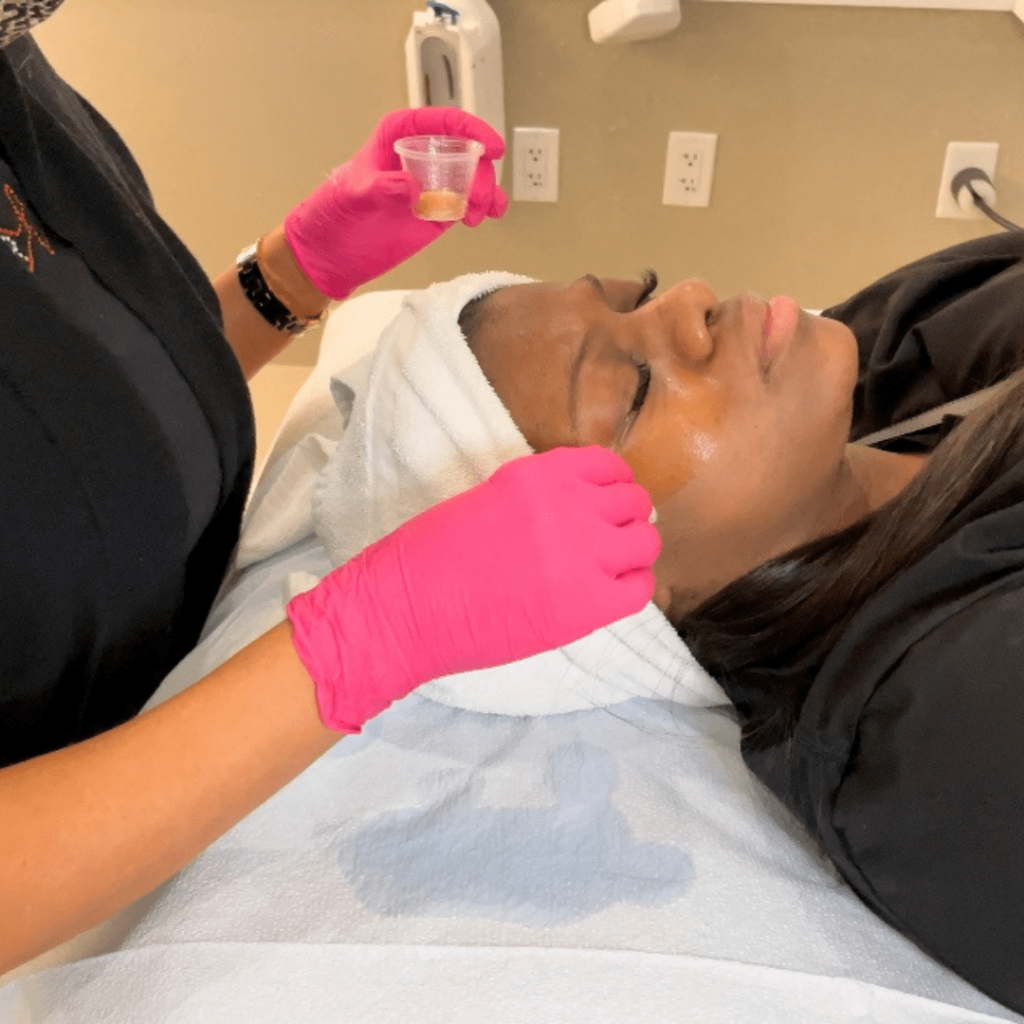
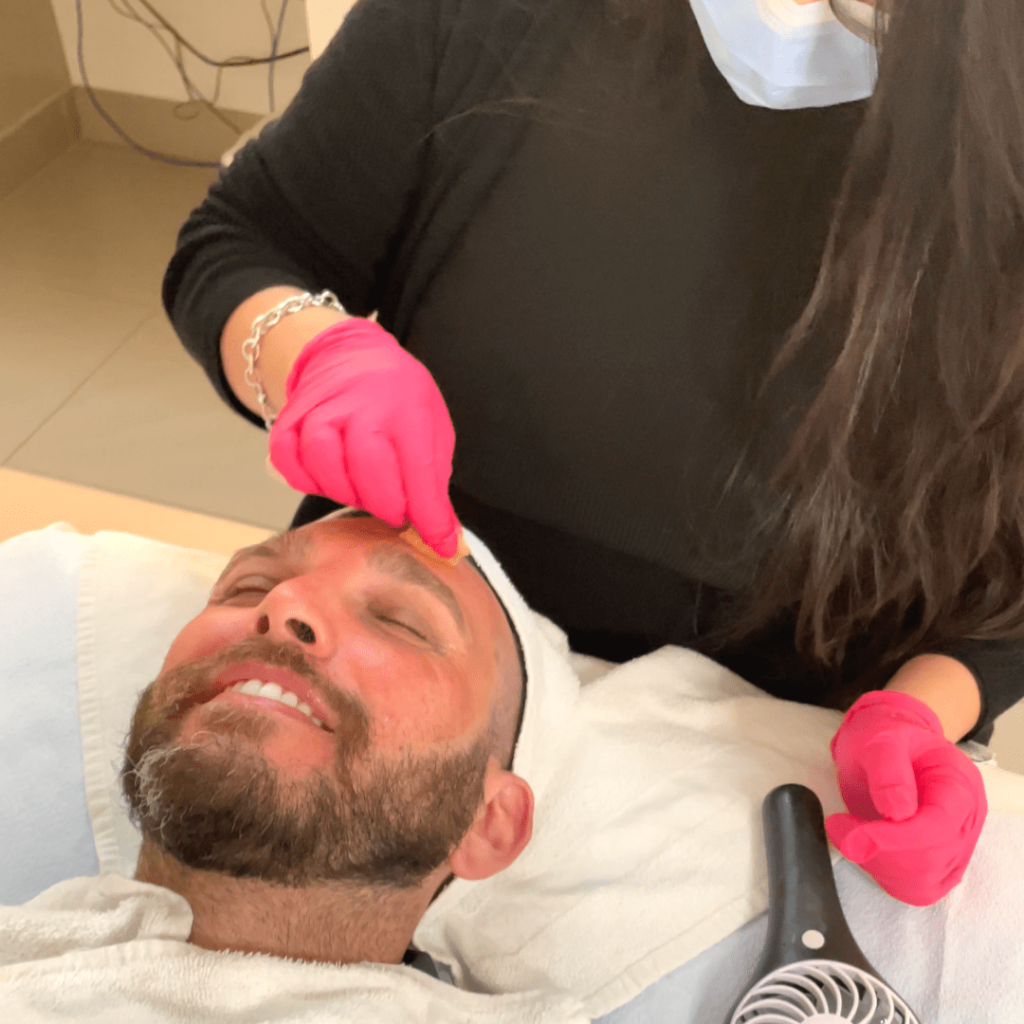
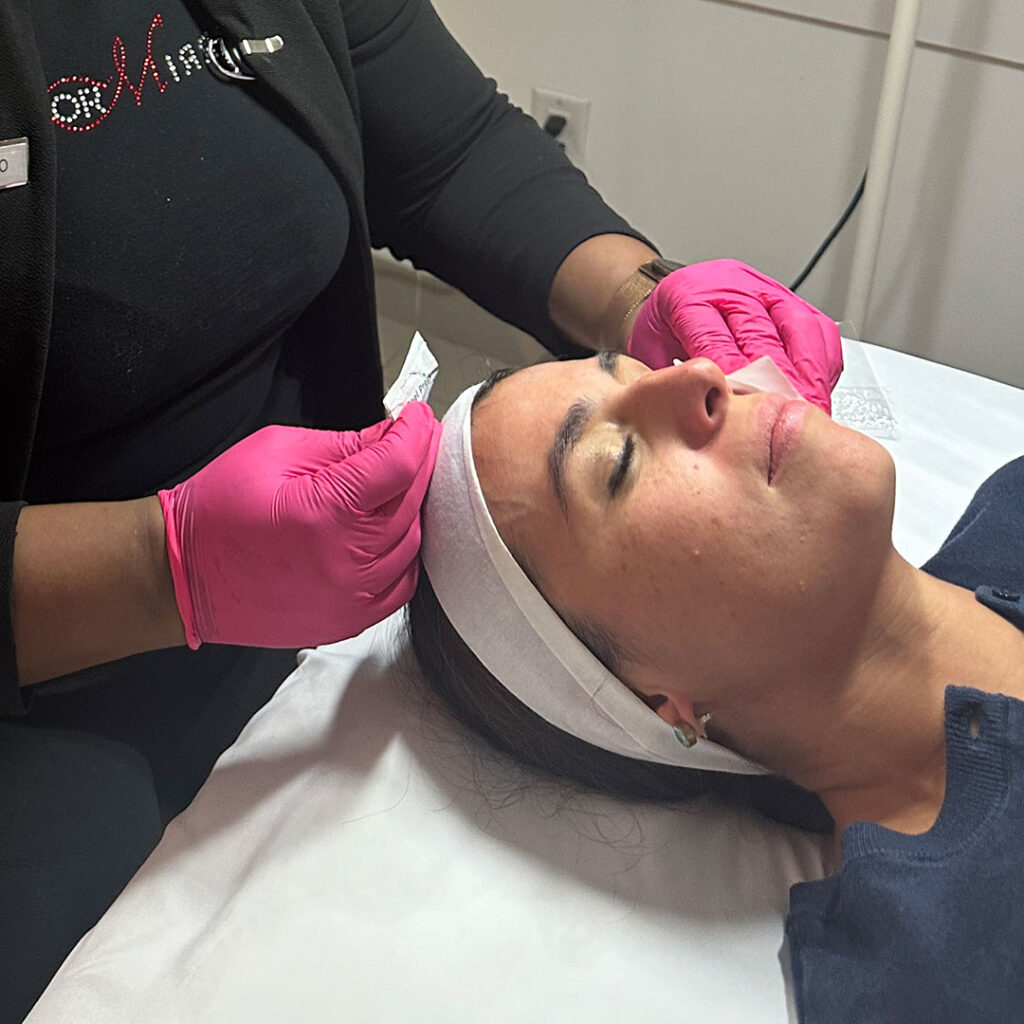
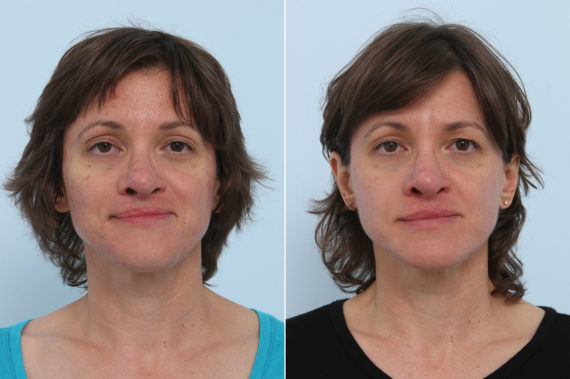
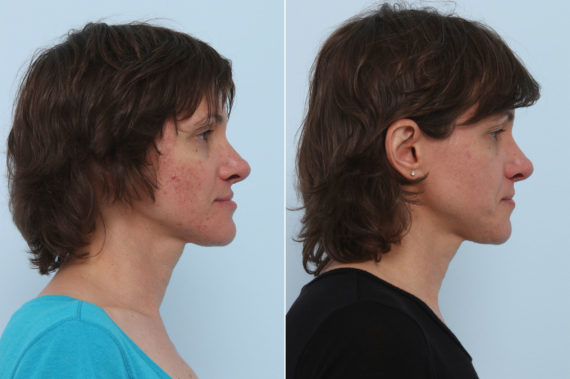
How Do Chemical Peels Work?
A chemical peel works by exfoliating the skin. Depending on the type and strength of the peel, it can exfoliate the top layer of skin (the epidermis) or it can reach down to the dermal layer.
After the dead or damaged skin cells are removed, the body produces new skin cells for a renewed complexion. The new cells often do not have the same issues that affected the dead cells, so the patient ends up looking more refreshed and youthful.
How Effective Are Chemical Peels?
How effective a chemical peel will be depends in large part on its strength. All types of peels exfoliate the skin, but some produce more dramatic results than others. A superficial or light peel doesn’t go very deep. If you choose to have a superficial peel, you might need to schedule more than one treatment session to get the results you want.
Deep peels tend to be very effective and can produce dramatic results. The downside is that they are far more invasive than superficial peels. They are often recommended to people who have more advanced signs of aging and who want the most dramatic results possible.
Types of Chemical Peels
Generally speaking, you can divide chemical peels into three categories based on their strength or depth. If you aren’t sure which option is right for you, an aesthetician or plastic surgeon can help you choose based on your skin care concerns and your goals.
Superficial/Light Peels
Sometimes called “lunchtime peels,” superficial or light chemical peels only go skin-deep. Alpha-hydroxy acid (AHA) is typically one of the main ingredients in a superficial or light peel and the Vitalize peel is a popular choice.
Superficial peels take just a few minutes to apply in the office and usually don’t require any downtime afterward. They can help to reduce the appearance of fine lines and other very early signs of aging.
Medium Peels
Medium strength chemical peels go a little deeper than superficial peels. The VI Peel is a good example. It contains acids such as vitamin C, Retin-A, and trichloroacetic acid (TCA). Another medium strength peel is the glycol acid peel.
Medium peels reach a little deeper than light peels, to the upper part of the dermis, the middle layer of the skin. They can treat more skin concerns than a light peel, including scarring and rough patches on the skin, as well as wrinkles, hyperpigmentation, and uneven skin tone.
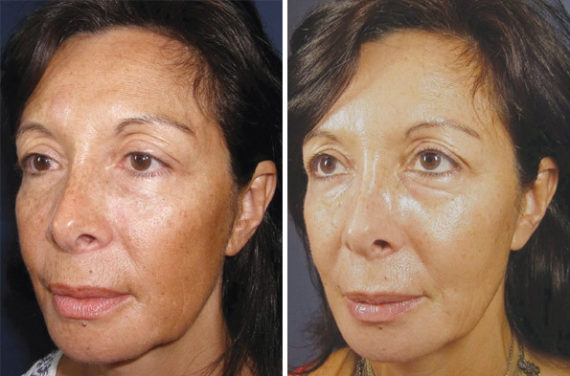
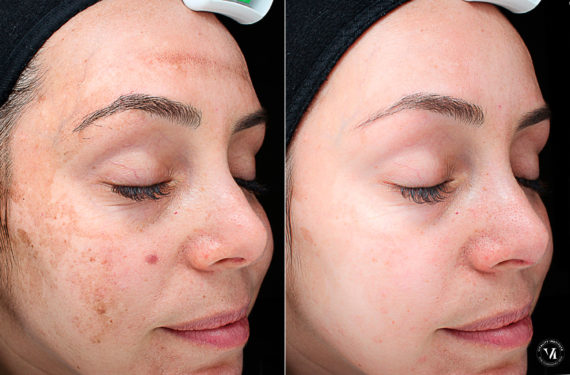
Deep Peels
Deep peels include the TCA peel and phenolic acid peel. They reach deeper than the other two peel types, affecting the skin down into the dermis. They also produce the most dramatic results and are usually highly recommended to people who have skin issues that are otherwise hard to treat, such as scars, deep wrinkles, and precancerous growths.
Because of their strength and depth, deep peels have a longer recovery period than other peel types. They also have the strictest requirements for aftercare. Our aestheticians can refer you to Dr. Paul Vitenas if they think a deep peel is appropriate for your needs.
Who Is a Good Candidate for a Chemical Peel?
People who want to improve the appearance and texture of their skin might be good candidates for a chemical peel if they meet some other requirements. It’s important for patients to be in good health overall and to understand what a peel can and can’t do.
Deep peels are usually not recommended to people with darker complexions, as the depth of the peel can lead to pigmentation issues. Superficial and medium peels are usually fine for people of all skin types.
Certain allergies and medications can affect candidacy as well. Someone who’s allergic to aspirin should avoid chemical peels. People taking Accutane should also avoid getting a chemical peel while they are on the medication.
Peels are also not recommended to people who are pregnant, have recently had their skin waxed in the same area, or who have active cold sores. If you have a history of developing keloid scars, your plastic surgeon might also advise against a chemical peel.
How Do You Prepare for a Chemical Peel?
The preparation process for a chemical peel depends on the type of peel you’re having. Light peels often do not require much preparation, while deeper peels do.
It’s recommended that you avoid sun exposure as much as possible in the weeks leading up to the peel. Exposure to the sun’s UV rays can change the pigmentation of your skin and that pigmentation can persist even after the peel. Our staff can provide you with guidance on how much sun exposure is OK and what you can do to protect your skin.
You might also need to change up your beauty routine to prepare for a peel. Waxing or using products that contain retinol can make the peeling skin more sensitive. You’ll most likely be asked to avoid shaving the area starting 24 hours before the peel.
Along with preparing for the skin peeling process that occurs after the treatment, you might also want to take care of practical matters before your peel. You might want to ask someone to accompany you to the treatment session or take the rest of the day off, depending on the peel you’re getting.
What Happens During a Chemical Peel?
At the start of a chemical peel at Mirror Mirror in Houston, an aesthetician will clean and prep your skin. While some types of medium peel require a topical numbing agent, neither the Vitalize nor the VI Peel does. Once the skin is prepped, the peel is applied.
A light peel only remains on the skin for 15 minutes, after which the aesthetician applies a neutralizing agent to stop the peeling process. The VI Peel needs to remain on the skin for four hours, but you don’t have to stay at the spa during that time. The aesthetician will give you instructions for washing the peel off at home after the time is up.
What Happens After a Chemical Peel?
When you arrive home after a peel, your skin is likely to be red and irritated or swollen. Skin peeling usually starts a few days after a chemical peel. How long the peeling lasts depends on factors such as your skin type and any skin conditions you have.
Peeling skin is much more dramatic after a deep peel. Many patients need a dressing or bandage on the skin following a deep peel. While patients can often go back to work and other regular activities immediately or within a few days following a superficial peel, the recovery time after a deep peel can be up to three weeks.
While your skin is in the healing process, it’s crucial to steer clear of sun exposure after chemical peels. It’s also advisable to refrain from applying makeup until given the green light by your aesthetician. Using a moisturizer can alleviate discomfort in the treated area.
What Are the Risks and Side Effects of Chemical Peels?
Chemical peels do have side effects and, like any type of cosmetic procedure, come with risks. You can dramatically reduce your risk of complications by following all the post-peel instructions given to you by the staff at Mirror Mirror Beauty Boutique.
One potential risk of a chemical peel is a change in the pigmentation or color of your skin, especially if you don’t avoid sun exposure or if you’re taking birth control pills. Infection is also possible, particularly following a deeper peel. You might be asked to take antiviral medications for several weeks before and after the peel to lower your risk of infection.

Houston’s Top Plastic Surgeon – Dr. Paul Vitenas
Why Choose Our Medical Spa
🏆 Trusted Professionals: Mirror Mirror Beauty Boutique specializes in non-invasive treatments to help increase your confidence.
Luxurious Environment: Relax in our 5-Star upscale setting, where your comfort, privacy and satisfaction are our top priorities.
Customized Treatment Plans: We tailor your medical grade rejuvenation treatment to ensure optimal results.
Convenient Location: Book your Free Consultation and start your transformation today!
Frequently Asked Questions about Chemical Peels
How many peels you’ll need to improve dark spots or hyperpigmentation depends on the depth of the peels. If you choose a light peel, you might need four or five treatments before you see the results you want.
Following the deepest of peels, your skin might need several weeks to regenerate. It can take about a week, but occasionally less, for refreshed and renewed skin to grow back after a superficial peel.
Lactic acid is a type of AHA, the type of acid used in superficial peels. It helps to exfoliate dead skin cells, minimize dullness, and reduce signs of aging.
You will most likely want to take a few days off from work after a medium chemical peel and should expect to take at least a few weeks off after a deep peel. Following a light peel, you might want to take it easy for a day or so but can generally go back to work almost immediately.
Can I have a chemical peel if I’m pregnant?
Chemical peels are not recommended for women who are pregnant or who are planning on becoming pregnant. Hormonal changes associated with pregnancy can affect the skin’s pigmentation.
Are chemical peels safe for people with dark complexions?
People with dark complexions can have light or medium peels but may want to exercise caution about deep peels. Usually, the preparation period is longer for people with dark skin, to minimize the risk of any pigment changes.
Where to buy chemical peels?
You might be able to find very light chemical peels over-the-counter at a cosmetics store or drugstore (try searching “chemical peels near me”). Retinol can also help improve signs of aging, so consider looking up retinol before and after photos to get an idea of what to expect.
You’ll get better results overall if you work with a trained aesthetician at a medical spa. Professional peels are deeper and produce better results.
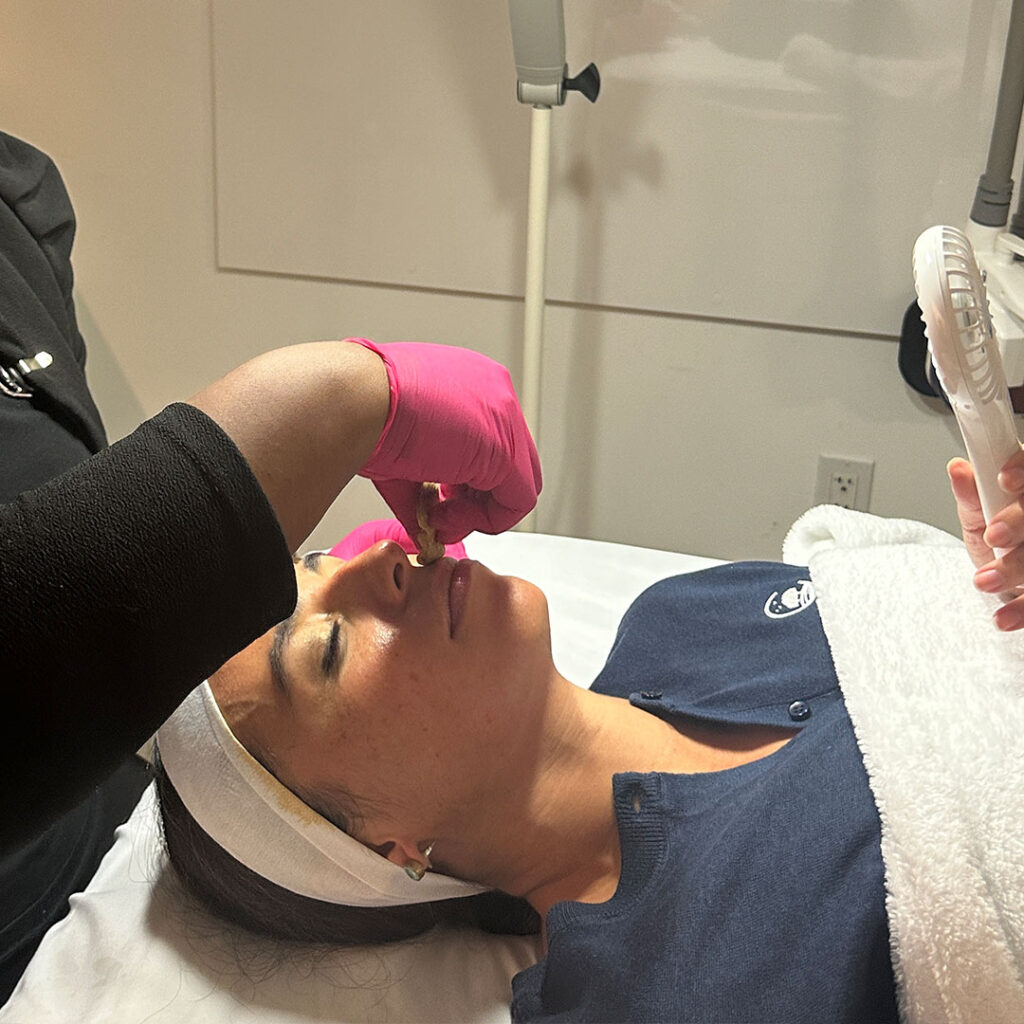
How much does a chemical peel cost?
The cost of a chemical peel depends on the type of peel. A light peel usually costs less than $200 per treatment while a medium peel can cost up to $450. If you are planning on having a series of peels, you might be able to purchase a package at a discounted rate.
Can I see chemical peel before and after photos?
During your consultation, ask to see photos of people before and after their peels to get an idea of the type of results you can expect.
Mirror Mirror Beauty Boutique in Houston, Texas offers two types of chemical peels: the Vitalize peel and the VI Peel. To learn more about each one and to see which one will help you reach your goals, call 281-810-9083 to schedule a consultation today. The medical spa is supervised by renowned plastic surgeon Dr. Paul Vitenas, who specializes in breast augmentation and other body and facial procedures.




